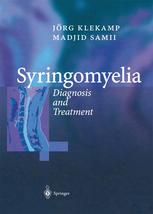

Most ebook files are in PDF format, so you can easily read them using various software such as Foxit Reader or directly on the Google Chrome browser.
Some ebook files are released by publishers in other formats such as .awz, .mobi, .epub, .fb2, etc. You may need to install specific software to read these formats on mobile/PC, such as Calibre.
Please read the tutorial at this link: https://ebookbell.com/faq
We offer FREE conversion to the popular formats you request; however, this may take some time. Therefore, right after payment, please email us, and we will try to provide the service as quickly as possible.
For some exceptional file formats or broken links (if any), please refrain from opening any disputes. Instead, email us first, and we will try to assist within a maximum of 6 hours.
EbookBell Team

0.0
0 reviewsMagnetic resonance imaging (MRI) has revolutionized our understanding of many neurological diseases. This is the first textbook on syringomyelia by a single team of authors since the introduction of this imaging modality. Based on a pathophysiological concept which is presented in the opening chapters of this book, we provide guidelines for diagnosis and surgical treatment of patients with syringomyelia. Syringomyelia is a manifestation of cerebrospinal fluid (CSF) flow obstruction, spinal cord tethering, or a spinal cord tumor. Therefore, an underlying pathology characterized by at least one of these features can be identified for every patient. Each entity which may lead to syringomyelia is described in a separate chapter, covering clincial presentations, neuroradiological features, neurophysiology, surgical indications and techniques and a detailed analysis of postoperative results. Special sections are devoted to patients in whom surgical treatment failed initially.This book should help any physician dealing with a patient with syringomyelia to initiate the appropriate diagnostic test and studies to identify the underlying disorder. Based on the analyses of postoperative outcomes for each of these disorders, the patient may be advised to either undergo surgery or to continue conservative treatment. Neurosurgeons are given precise guidelines for surgical indications and strategies. Microsurgical techniques are illustrated step by step and include detailed intraoperative photographs.